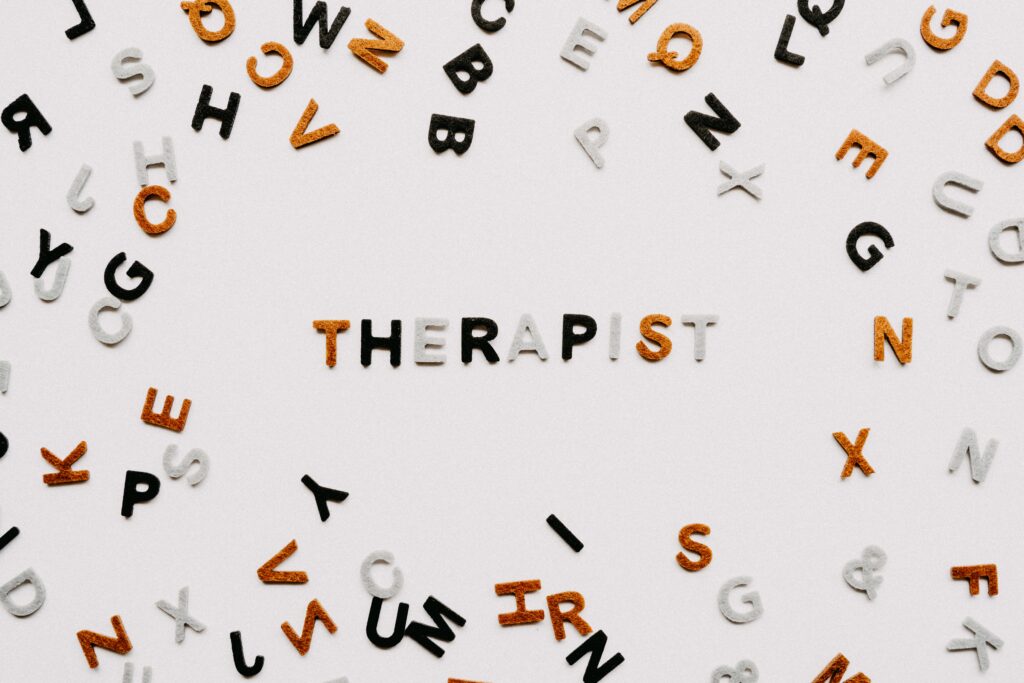UNDERSTANDING CHILDHOOD AND ADOLESCENT ANXIETY: A GUIDE FOR PARENTS
Anxiety is a natural part of life and, in small doses, is helpful. However, when anxiety becomes excessive and persistent, it can significantly impact a child or adolescent’s well-being and daily functioning. As a parent, being aware of the various types of anxiety disorders and their developmental risk factors is crucial in recognizing and supporting your child’s mental health.
Separation Anxiety Disorder
Commonly observed in younger children, separation anxiety involves intense fear or worry about being away from familiar surroundings, like home, or separated from loved ones. They might even experience distress simply from thinking about or anticipating separation.
This anxiety can present itself through clinginess, reluctance, or refusal to attend school/activities/sleepovers, excessive distress during drop-offs, or persistent worries about being apart from loved ones. Separation anxiety can even present itself at bedtime.
A child experiencing separation anxiety might become visibly upset, crying, or pleading for the caregiver not to leave. They may also show physical symptoms like stomachaches, headaches, or nausea when anticipating separation (sometimes several days ahead).
Additionally, they might seek constant reassurance or be overly worried about potential harm befalling themselves or their caregivers when apart. This can include fear such as caregivers being in an accident, pets dying in a housefire, or being kidnapped while playing in their backyard.
This anxiety can significantly disrupt the child’s routine, affecting their social interactions, academic performance, and overall well-being.
Generalized Anxiety Disorder (GAD)
GAD involves excessive and persistent worries about various aspects of life, such as academic performance, social interactions, and personal safety. Children with GAD often exhibit perfectionism, excessive self-criticism, and physical symptoms like stomachaches or headaches.
These worries go beyond what is developmentally appropriate and might include concerns about minor events or catastrophic outcomes. These children may display perfectionistic tendencies, seeking constant reassurance, and overthinking even routine activities.
Physical symptoms such as headaches, stomachaches, muscle tension, or fatigue might accompany their anxious thoughts. They may struggle with falling asleep, difficulty concentrating, or irritability due to their persistent worries.
This chronic state of apprehension and heightened anxiety can impair their ability to focus in school, enjoy leisure activities, and maintain healthy relationships, impacting their overall well-being.
Social Anxiety Disorder
Children or adolescents with social anxiety experience intense fear or discomfort in social situations due to a fear of being judged or embarrassed. They may avoid social gatherings, speaking in public, or participating in activities where they feel scrutinized.
They may avoid speaking up in class, participating in activities, or attending gatherings. When forced to be in social situations, they might experience physical symptoms such as blushing, trembling, sweating, rapid heartbeat, or upset stomach.
These children often worry excessively about making mistakes, being negatively evaluated, or feeling humiliated in social settings. Their fear of rejection or criticism hampers their ability to form friendships, engage in extracurricular activities, or participate in classroom discussions, affecting their academic and social development.
Social anxiety disorder can significantly impact a child’s self-esteem, relationships, and overall quality of life.
Anxious school refusal
Anxious school refusal is characterized by a persistent and overwhelming fear or anxiety related to attending school. Children experiencing this may exhibit extreme distress or panic attacks when faced with the prospect of going to school.
They might plead, cry, or express intense physical symptoms like stomachaches, headaches, dizziness, or nausea, making it challenging to leave home. Their anxiety about school can lead to frequent absences, tardiness, or reluctance to participate in school-related activities.
These children may express concerns about being separated from their caregivers, fear of social interactions, academic pressures, or experiencing bullying or ridicule at school.
The avoidance of school can significantly impact their academic progress, social relationships, and overall emotional well-being, causing distress for both the child and their family.
Specific Phobias
Specific phobias refer to intense and irrational fears of specific objects, situations, or activities. It’s important to note that fears are quite common in childhood, and many children outgrow them with time.
However, when these fears persist beyond normal developmentally appropriate worries and significantly interfere with a child’s daily life, it may be indicative of a specific phobia. Common phobias include fear of dogs, insects, spiders, the dark, thunderstorm, needles, vomiting and costumes.
Panic Attacks
A panic attack is characterized by a sudden and intense surge of fear or discomfort that reaches its peak within minutes. The onset is unexpected without obvious triggers.
In children, panic attacks can be mistaken for intense meltdowns. Physical symptoms might include racing heart, shortness of breath, chest pain or discomfort, trembling, sweating. The child might also be unable to speak or respond.
Developmental Risk Factors for Anxiety:
- Temperament: Inherent behavioral traits can predispose children to anxiety. Highly reactive or shy temperaments may increase vulnerability to anxiety disorders. Children exhibiting behavioral inhibition, heightened sensitivity to new stimuli, or excessive shyness might be at a higher risk of developing anxiety-related challenges.
- Parental Anxiety: Children of parents with anxiety disorders might be more susceptible to developing anxiety themselves. This can be due to genetic predisposition or learned behaviors and coping mechanisms observed at home.
- Biological Factors: Imbalances in brain chemistry or alterations in brain function can contribute to anxiety disorders. Genetic predisposition and neurological differences may increase a child’s vulnerability to anxiety.
- Environmental Factors: Stressful life events, such as family conflicts, major life changes, parental divorce, or moving to a new environment, can trigger or exacerbate anxiety symptoms in children.
- Trauma and Stress: Exposure to traumatic events, such as abuse, neglect, or accidents, can significantly impact a child’s mental health, leading to the development of anxiety disorders.
Supporting Your Child with Anxiety:
- Open Communication: Encourage open conversations with your child about their feelings and emotions. Create a safe and non-judgmental environment where they feel comfortable expressing their worries.
- Validate Feelings: Acknowledge and validate your child’s emotions. Let them know that it’s okay to feel anxious and that you’re there to support them.
- Parental accommodations: Refers to the adjustments or modifications that parents make in their behavior or routines to accommodate their child’s anxiety symptoms. For example, parents may avoid certain situations or activities that trigger their child’s anxiety. While this might provide temporary relief, it reinforces the idea that avoiding anxiety-provoking situations is the only solution.
- Promote Healthy Coping Mechanisms: Teach your child healthy coping strategies like deep breathing exercises, mindfulness, regular physical activity, and relaxation techniques to manage their anxiety.
- Establish Consistent Routines: Structure and predictability can be comforting for anxious children. Establishing regular routines for meals, sleep, and activities can help reduce anxiety levels.
Seek Professional Help
If you are concerned about your child’s anxiety, consider seeking help from a mental health professional, such as a therapist or psychologist, specialized in treating children and adolescents.
Explore online child psychotherapy services and online adolescent psychotherapy services at the Leon Psychology Clinic. Our psychologists and psychotherapists can help determine whether your child’s symptoms are within the range of typical development and, if required, provide support and intervention for an anxiety disorder.
Recommended Children’s Books
- ”Ruby Finds a Worry” by Tom Percival
- ”How Big Are Your Worries Little Bear” by Jayneen Sanders
Frequently Asked Questions
What does anxiety look like in a child?
Anxiety in children can manifest in various ways, and it’s important to note that each child is unique, so symptoms may vary. Additionally, some level of anxiety is normal and can be part of typical development. However, when anxiety becomes excessive or interferes with a child’s daily functioning, it may be a cause for concern. Here are some common signs and behaviors that may indicate anxiety in children: stomachaches, headaches, muscle aches, avoidance, clinginess, irritability, restlessness, regression (ex., bedwetting), sleep difficulties, social withdrawal, school difficulties, and more.
What age does anxiety usually start?
Anxiety can manifest at any age, including infancy. However, the presentation of anxiety symptoms may vary depending on developmental stages. It’s normal for children to experience anxiety in response to new experiences, such as starting school or meeting new people. Transient anxiety is a typical part of development, and many children naturally outgrow specific fears and worries. In terms of more persistent anxiety disorders, some may emerge in early childhood, while others may become more noticeable as a child grows older.
Is anxiety inherited from parents?
Research suggests that many children with anxiety have a parent with anxiety. This is because of a combination of biological factors (shared genes) and environmental factors (modelling anxiety and ineffective coping, overprotective parenting).
In Short
As a parent, it’s crucial to understand that childhood and adolescent anxiety disorders are treatable conditions. With early recognition, support, and appropriate interventions, children and adolescents can learn to manage their anxiety effectively, leading to improved well-being and a more fulfilling childhood experience. Your empathy, understanding, and proactive approach can make a significant difference in your child’s mental health journey.
Dr. Stephanie Leon
Dr. Leon is a clinical psychologist and neuropsychologist practicing in the province of Ontario and Quebec. She works with children, teens, and their parents to address emotional, behavioural, and cognitive difficulties. Dr. Leon provides online psychology services through the Leon Psychology Clinic.











